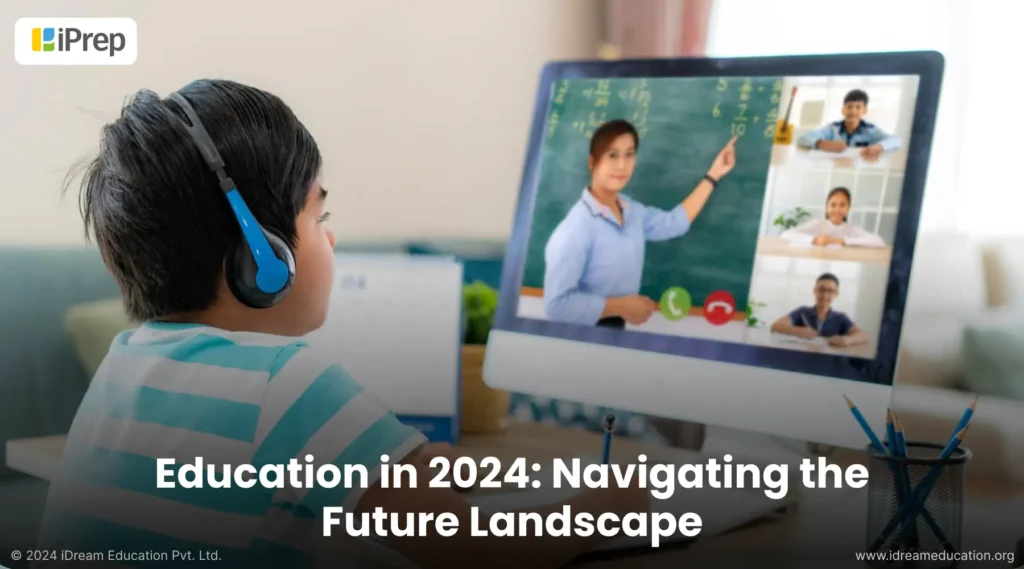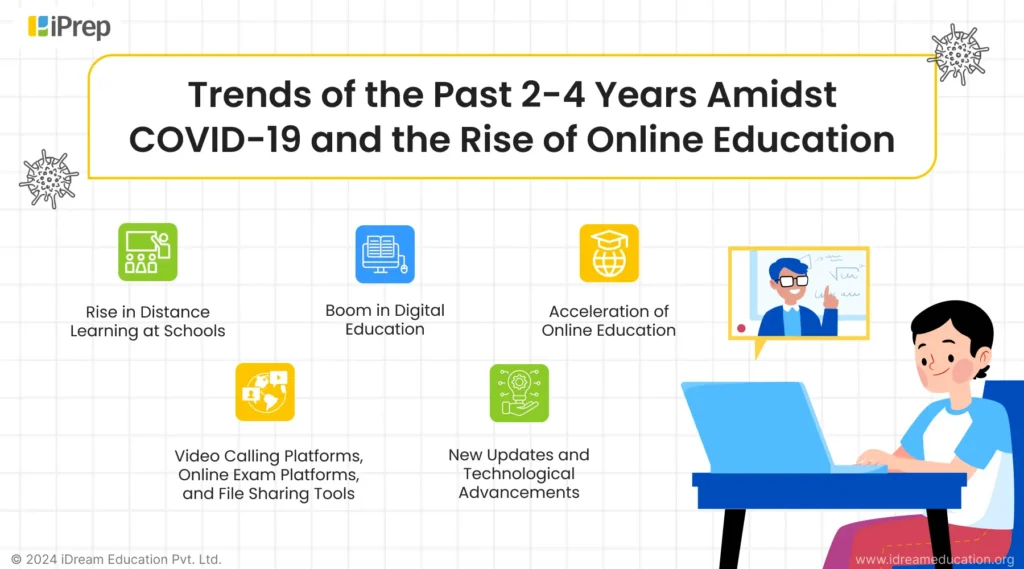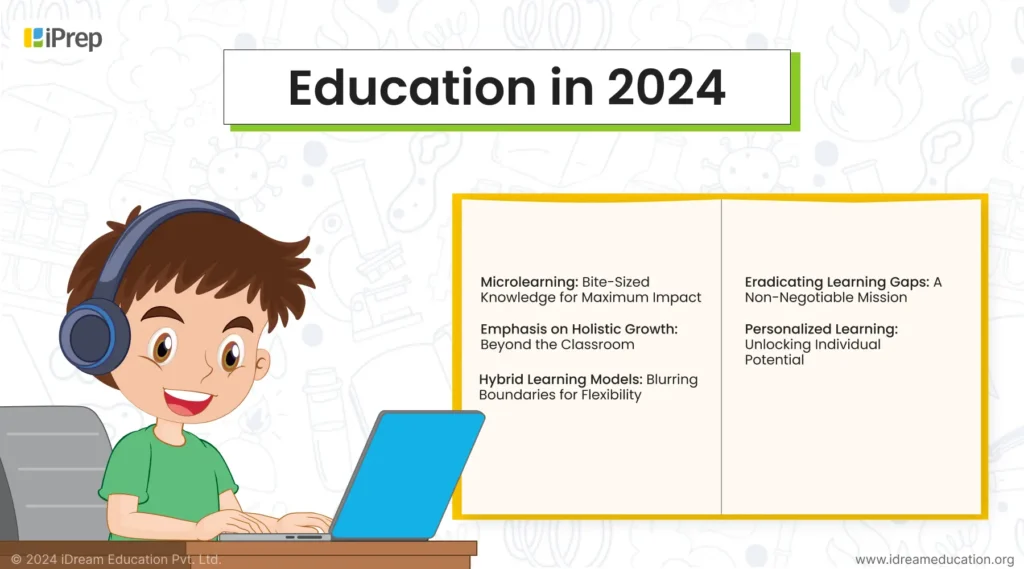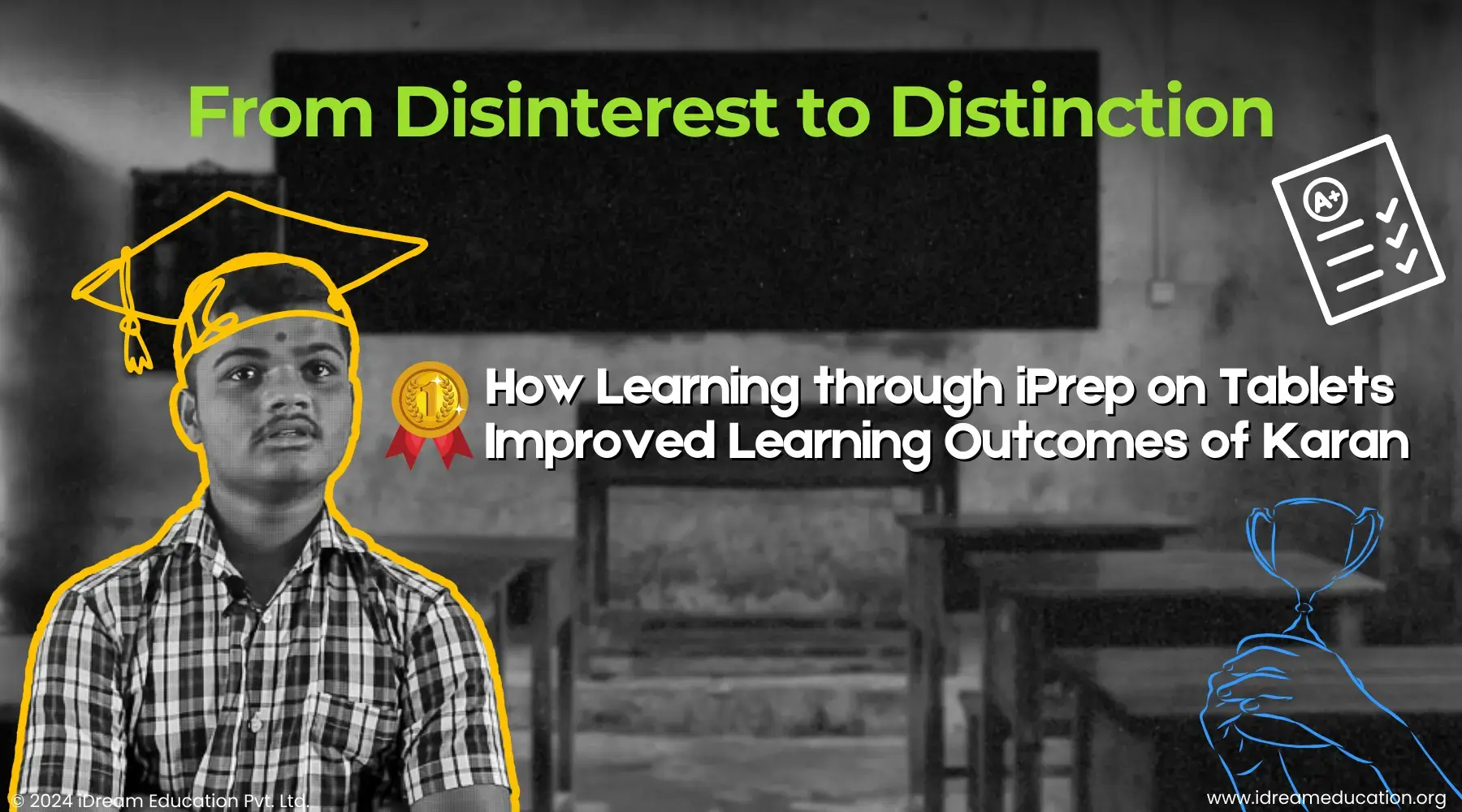Education in 2024: Navigating the Future Landscape – Showing Trends, Enrollment Increases, and Transformative Approaches

Amid dynamic shifts in the education system over the past 2-4 years, notably marked by the challenges posed by the COVID-19 pandemic, technological advancements, blended learning, and the need for local language content, the learning landscape has undergone a profound transformation. As we step into 2024, the educational narrative is woven with threads of resilience, innovation, and adaptability. This blog embarks on a journey through the trends shaping education, exploring the rise of online platforms, the surge in accessibility to education, and the impactful changes steering the course of learning and education in 2024.
In response to the global pandemic, the acceleration of online education in recent years has become not just a reaction but a change. Educational institutions worldwide have embraced technology, from digital classrooms to virtual exams. This period witnessed a boom in digital education, with advancements in video calling platforms, online exam tools, and collaborative file-sharing applications contributing to the transformative landscape of education in 2024.
However, the story goes beyond the online setting. Schools experienced a rise in distance learning, bringing education to students’ doorsteps, irrespective of geographical boundaries.
In this blog, we unravel the complexities of the past few years and delve into the multifaceted changes that will characterize education in 2024.
Trends of the Past 2-4 Years Amidst COVID-19 and the Rise of Online Education

In response to the global pandemic, the education system witnessed an unprecedented acceleration towards online learning. What was initially a reactive measure to external challenges has evolved into a permanent fixture, fundamentally altering how we approach learning.
Acceleration of Online Education
The educational landscape has rapidly transformed due to the acceleration of online education, catalyzed by the global challenges posed by the COVID-19 pandemic. The onset of the pandemic required a swift pivot to online learning, compelling educational institutions worldwide to adopt virtual classrooms, video conferencing tools, and Learning Management Systems (LMS). This abrupt shift not only addressed immediate challenges but also underscored the long-term potential of online education, shaping the landscape of Education in 2024.
The transition from traditional classrooms to digital spaces, fueled by technological advancements, has been innovative, marking a fundamental shift in the essence of the learning experience. Institutions have not merely adapted but fully embraced the possibilities of online education, integrating innovative tools such as video calling platforms, online exams, and collaborative file-sharing applications. This transformative journey sustained education during challenging times and paved the way for a dynamic and engaging experience for education in 2024 and beyond.
Boom in Digital Education
An unprecedented surge in digital education for school students emerged in response to the global COVID-19 pandemic. As traditional classrooms shuttered due to lockdowns, educators swiftly embraced online platforms to ensure uninterrupted learning. This shift marked a seismic change, with technology becoming the cornerstone of education in 2024.
Several factors fueled this surge in digital education. Firstly, the necessity of remote learning accelerated the adoption of online tools, making them integral to the education landscape. Additionally, innovative ed-tech solutions also emerged, offering interactive and personalized learning experiences. Students now engage with immersive content, adaptive assessments, and collaborative platforms, transforming the educational paradigm.
The boom in digital education not only addressed immediate challenges but also uncovered its long-term potential. As we enter 2024, education has become deeply connected to technology, creating a dynamic and accessible learning environment for students worldwide. This transformation signifies a lasting shift towards a more connected, resilient, and tech-infused educational landscape.
New Updates and Technological Advancements
The school education landscape in the last 2-4 years has undergone remarkable advancements. One notable development is the proliferation of smart devices and the seamless integration of digital tools into learning. From interactive whiteboards to cloud-based collaboration platforms, students in 2024 now have access to diverse resources that enhance engagement and participation.
The COVID-19 pandemic acted as a catalyst for the widespread adoption of online education. Schools globally embraced learning management systems, video conferencing tools, and digital textbooks to facilitate remote learning during lockdowns. This shift ensured the continuity of education and laid the foundation for a more flexible and tech-integrated learning environment for education in 2024.
Furthermore, artificial intelligence (AI) has been pivotal in personalized learning experiences. Adaptive learning platforms analyze individual student progress, tailoring content to meet their specific needs. This customization fosters a more efficient and effective learning journey, reflecting the cutting-edge approaches to education in 2024.
In addition, cloud-based assessment tools have streamlined evaluation processes, providing instant feedback to students and educators. This real-time feedback loop enhances the learning experience and promotes a deeper understanding of the subject matter, aligning with the evolving standards of education in 2024.
Video Calling Platforms, Online Exam Platforms, and File Sharing Tools
The educational environment has seen a notable integration of video calling platforms, online test platforms, and file-sharing tools, which have had a substantial impact on how school students engage with learning. The emergence of these technologies, accelerated by the global COVID-19 pandemic, has played a pivotal role in overcoming challenges associated with remote education. Video calling platforms have become essential tools for virtual classrooms, enabling real-time interaction between students and teachers. This has provided a lifeline during school closures and social distancing measures, allowing for live lectures, Q&A sessions, and collaborative discussions, thus simulating the traditional classroom experience.
Simultaneously, adopting online exam platforms has streamlined the assessment process for students. These platforms offer secure and efficient ways to conduct exams remotely. The flexibility in scheduling exams has proven invaluable during disruptions to regular schooling, ensuring a seamless continuation of the learning process. Additionally, file-sharing tools have changed collaboration and resource access among students and teachers. These platforms facilitate the easy sharing of documents, presentations, and study materials, making the learning process more dynamic and adaptable to the evolving landscape of education in 2024.
Rise in Distance Learning at Schools
There has been a remarkable surge in the adoption of distance learning and open schooling for school students. Propelled by technological advancements, traditional educational paradigms have experienced a notable transformation. The decision to shift from physical classrooms to online and remote learning models by educational institutions worldwide reflects a dynamic change in the delivery of education. This transformation addresses not only immediate challenges but also prompts a broader reconsideration of how education in 2024 can be effectively facilitated.
Distance learning, facilitated by virtual classrooms, interactive online platforms, and digital resources, has allowed students to access educational content from the comfort of their homes. Open schooling, characterized by flexible schedules and personalized learning pathways, has gained traction as an alternative or complementary approach to conventional brick-and-mortar schooling. This trend has democratized education by reaching students in remote or underserved areas and empowered learners to tailor their educational experiences. The rise in distance learning and open schooling signifies a paradigm shift towards more inclusive, adaptable, and technology-driven landscapes of education in 2024.
Now, let’s examine the surge in education over the last 2-4 years that is expected to result in increased access to education in 2024 for everyone.
Surge in Educational Access Over the Last 2-4 Years
In the academic years spanning from 2019 to 2022, the gross enrollment ratios (GER) for primary, upper primary, and secondary education exhibited a consistent upward trend, indicative of a notable increase in access to education for people. Specifically, in the 2019-2020 academic year, the GER for primary education attained a value of 102.7%, while upper primary education recorded 89.7%, and secondary education stood at 77.9%. Subsequently, in the following academic year (2020-2021), the GER for primary education further increased to 103.3%, upper primary education rose to 92.2%, and secondary education reached 79.5%.
Continuing this positive trajectory, in the subsequent academic year (2021-2022), the GER for primary education reached 103.4%, upper primary education demonstrated a notable increase at 94.7%, and secondary education maintained an upward trend at 79.6%. These consecutive yearly increments in enrollment figures for students underscore a commendable surge in accessibility to education, reflecting the commitment towards inclusive and widespread educational opportunities.
This surge in educational access can be attributed to a multifaceted approach. Government initiatives focused on improving infrastructure, providing scholarships, and enhancing the overall quality of education have played a pivotal role. Increased awareness campaigns and community engagement programs have also contributed to breaking barriers to enrollment, especially in marginalized communities.
There’s more
Advancements in technology have facilitated distance education, leading to a notable 7% increase in enrollment in the academic year 2020-21 compared to 2019-20. The digital divide is gradually narrowing, allowing students from remote areas to participate in educational programs, further fostering inclusivity.
Moreover, targeted efforts to address the needs of children with functional needs (CWSN) resulted in a noteworthy 3.3% increase in their enrollment in the fiscal year 2022. This reflects a more inclusive educational system that accommodates diverse learning requirements.
The encouraging trend extends to declining school dropout rates for children at all levels in recent years, indicating sustained efforts to foster educational continuity and retention.
Overall, the surge in educational access is a testament to concerted efforts in policy-making. Additionally, community engagement and technological integration have played crucial roles, thus creating a more inclusive and accessible educational landscape. Furthermore, these combined efforts have not only expanded opportunities for learners but have also enhanced the overall quality of education.
Now that we have examined the data supporting the surge in educational access, it’s time to explore what education in 2024 will focus on in the next section.
Education in 2024

The year 2024 is full of possibilities, as traditional paradigms yield a more dynamic and personalized approach. In this transformative era, the emphasis is on tailoring educational experiences to individual needs, harnessing the power of technology, and fostering holistic growth. As we delve into the intricacies of contemporary education in 2024, we uncover an interconnected landscape of personalized learning, eradicating learning gaps, embracing microlearning, and seamlessly integrating technology into the very fabric of learning environments.
Personalized Learning: Unlocking Individual Potential
The days of a one-size-fits-all approach are long gone. As we enter 2024, the recognition that individuals learn in diverse ways has become more pronounced than ever. Personalized learning is the key to unlocking the unique potential within each student.
Acknowledging that one approach cannot cater to the varied learning styles, personalized learning has emerged as an educational paradigm tailored to the individual. This approach harnesses technology and innovative teaching methods to cater to diverse learning preferences, pacing, and strengths. By recognizing and adapting to the specific needs of each learner, personalized learning ensures that no one is left behind.
In 2024, the focus on personalized learning is not just a trend but a fundamental shift in education. It empowers students to take control of their learning journey, fostering a sense of ownership and engagement. Adaptive technologies, tailored content, and flexible pacing provide an environment where students thrive. Educators play a pivotal role as facilitators, guiding students through a personalized curriculum that aligns with their unique learning styles and contributing to shaping the landscape of education in 2024.
Emphasis on Holistic Growth: Beyond the Classroom
In 2024, the education landscape is witnessing a transformative shift towards recognizing the importance of holistic growth beyond the traditional confines of the classroom. Holistic development in school education transcends mere academic achievements, encompassing a child’s physical, intellectual, emotional, social, and moral facets. This approach emphasizes fostering a well-rounded individual and preparing students for the complexities of the real world.
Amid the rapidly evolving global landscape, a focus on holistic growth is necessary to equip students with the skills and resilience required for success in diverse environments. Beyond textbooks and exams, students need to develop emotional intelligence, social skills, and ethical values. By acknowledging the interconnectedness of various aspects of a child’s development, educators and parents can create an environment that nurtures academic prowess, emotional well-being, and social adaptability.
An emphasis on holistic growth in 2024 is imperative as society recognizes that academic achievements do not solely determine success. Employers and communities seek individuals with a well-rounded skill set, including adaptability, teamwork, and ethical decision-making. Schools that prioritize holistic development play a crucial role in shaping future leaders capable of navigating the complexities of an ever-changing world.
Eradicating Learning Gaps: A Non-Negotiable Mission
In 2024, education’s mission to eradicate learning gaps has become non-negotiable. Recognizing that every student deserves an equitable opportunity to thrive, there is an unequivocal commitment to closing learning gaps and ensuring no individual is left behind.
The emphasis on eradicating learning gaps in education in 2024 is crucial for several reasons. Firstly, a skilled and knowledgeable workforce is paramount in an interconnected and rapidly evolving global landscape. Addressing learning gaps is not just an ethical imperative but an economic necessity. The jobs of the future demand a well-educated and adaptable workforce, and closing learning gaps is central to achieving this goal.
Moreover, with the advancements in technology and communication, access to information has never been more democratized. Thus, there is a real possibility to eradicate learning gaps by leveraging technology. For education in 2024, adopting innovative teaching methods, personalized learning approaches, and inclusive policies is imperative to bridge these gaps. It’s a commitment to creating an educational ecosystem where students can access the tools and resources needed to reach their full potential regardless of background or circumstance. In this era, eradicating learning gaps is a goal and a mandate for a more equitable and prosperous future.
Microlearning: Bite-Sized Knowledge for Maximum Impact
There is a growing emphasis on microlearning as a powerful pedagogical tool in the educational landscape. Microlearning involves delivering educational content in small, easily digestible units, providing learners with bite-sized knowledge for maximum impact.
In today’s fast-paced world, where attention spans are shrinking and time is a precious commodity, microlearning meets the needs of learners seeking efficiency and effectiveness. The format allows for quick consumption and retention of information, making it an ideal solution for on-the-go professionals, students, and anyone with a busy schedule.
Moreover, the rise of mobile devices and digital platforms has made microlearning more accessible. Learners can engage with short, focused modules anytime, anywhere, fostering a culture of continuous learning. The approach caters to the modern learner’s preference for just-in-time information. It aligns with the principles of cognitive load theory, ensuring that learners can absorb and apply knowledge more effectively.
For education in 2024, the emphasis on microlearning is necessary to adapt to the evolving needs of learners and the changing nature of work. This approach accommodates the short attention spans prevalent in today’s society and aligns with the rapid pace of information dissemination. By providing bite-sized knowledge for maximum impact, microlearning transforms education into a flexible, adaptive, and highly efficient process, facilitating continuous learning in a rapidly changing world.
Hybrid Learning Models: Blurring Boundaries for Flexibility
As we venture into 2024, the education sector is witnessing a changing emphasis on Hybrid Learning Models, blurring the traditional boundaries between physical and virtual classrooms. However, the need for flexibility in education has become more crucial than ever, driven by many factors such as technological advancements, diverse learner preferences, and the ever-evolving global landscape.
Hybrid Learning Models seamlessly blend in-person and online components, allowing students to tailor their learning experience. This approach recognizes that individuals have different needs, and a one-size-fits-all model is no longer effective. Technology integration facilitates dynamic and interactive learning experiences, breaking away from the constraints of traditional brick-and-mortar settings.
For education in 2024, the emphasis on Hybrid Learning Models is necessary to cater to the demands of a rapidly changing world. Their flexibility accommodates various learning styles, allowing students to access resources, collaborate with peers, and engage in coursework at their own pace. Moreover, hybrid models prepare students for the digital skills required in the workforce, aligning education with the contemporary demands of a globally connected society. By blurring boundaries between physical and virtual learning environments, hybrid models create an adaptable educational framework that ensures accessibility and relevance in the years to come.
Let’s conclude
The last 2-4 years have witnessed a transformative shift in education, accelerated by the challenges of the COVID-19 pandemic. Online education has become a permanent fixture, with digital tools and advancements shaping a resilient and tech-infused learning environment for education in 2024.
The integration of video calling, online exams, and file-sharing tools has changed learning, while the rise in distance learning signals a shift towards inclusivity. The surge in educational access is evident, supported by government initiatives and technological advancements, leading to increased enrollment and reduced dropout rates.
Education in 2024 will focus on personalized learning, holistic growth, eradicating learning gaps, microlearning, and hybrid models. This transformative era underscores a commitment to creating an inclusive, adaptable, and tech-driven educational landscape, preparing students for success in a rapidly evolving global society. The threads of resilience, innovation, and adaptability continue to weave a dynamic educational narrative for the future.






